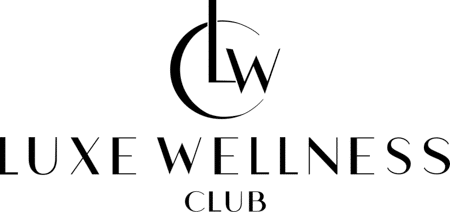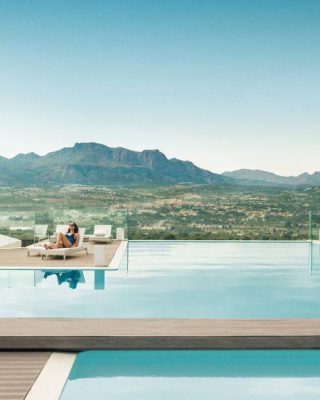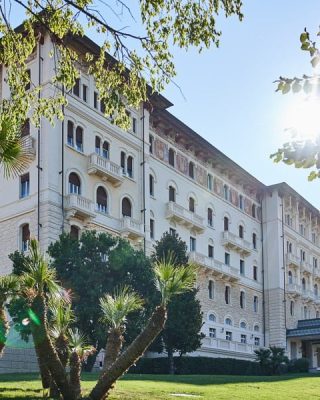We met Dr. Ruhi Cakir at The Nova Clinic in the Jumeirah Madinat, one of Dubai’s most prominent clinics. In this setting dedicated to beauty and well-being, where cutting-edge aesthetic medicine meets regenerative therapies, the anti-aging and ozone therapy expert welcomes an international clientele in search of visible, long-lasting results.
Pascal Languillon (PL): Dr. Cakir, you are recognized as one of the world’s leading anti-aging specialists, and have devoted a large part of your career to ozone therapy. Could you start by explaining what ozone therapy is and how it affects our bodies?
Ruhi Cakir (RC): Ozone therapy involves using very small doses of ozone, measured in micrograms, to stimulate the body’s oxygenation and defense capacities. High doses of ozone are toxic, but low doses, administered in a controlled manner, are therapeutic. In fact, it’s like a workout: you give the body a little stimulation, and it reacts by producing its own antioxidant enzymes, and so on. Day after day, you increase the dose slightly, and the body reacts more and more strongly. This creates a “resonance” effect that gradually leads to balance and healing. We’ve published numerous studies on the subject, and I’ve written two books detailing these mechanisms.

PL: In concrete terms, what benefits are your patients seeing?
RC: The effects are numerous. On the metabolic level, for example, a person whose hemoglobin A1c level is at the high limit – a sign of pre-diabetic risk – often sees this marker go down after a series of sessions. On the hormonal front, I’ve seen patients whose testosterone was too low, or whose estrogen levels were too high, regain balance. Ozone also acts as a powerful anti-inflammatory and analgesic. Many chronic pains disappear or are considerably reduced. And then there are the more subtle but much-appreciated effects: better energy, a more stable mood, better quality sleep.
PL: What is a typical session like?
RC: We work with blood. An adult has about six liters of blood. To achieve a significant effect, we would need to ozonize 25 to 30% of this volume. But we can’t do it all at once! We take about 200 milliliters, which we ozonate before reinjecting. This is what we call a “passage”. In one session, we can do three, sometimes up to ten passes, depending on the patient’s condition. The idea is to repeat this process over several sessions to “train” the body, just like at the gym. Lifting 10 kilos ten times is far more beneficial than lifting 100 kilos once: the ozone acts in the same way.

PL: And what if a patient has only a short time ahead of him, during a short stay in a spa or clinic?
RC: In this case, I propose a different approach. Ozone therapy is very effective, but it requires a certain regularity to produce lasting results. When a patient only stays three or four days, I prefer quicker solutions such as intravenous nutrition, peptides or bio-identical hormones. These methods deliver visible results faster, even if they don’t have the depth of action of ozone.
PL: Tell us about peptides, which are much talked about in anti-aging medicine.
RC: Peptides are short chains of amino acids. They resemble drugs in their effects, but are not yet approved as such, as they have not gone through all the regulatory stages. Yet they are extremely useful. Some peptides act on cognitive functions, helping to reduce brain fog, others improve sleep, support muscle mass gain or sports recovery. Some mimic the action of growth hormone or factors such as IGF-1. They come in various forms: injections, tablets, nasal sprays. When a patient is unable to follow a full ozone cure, I often prescribe take-home peptides to prolong the benefits.
PL: We also hear a lot about NAD. What is its role in anti-aging?
RC: NAD, or nicotinamide adenine dinucleotide, plays a major role in cellular metabolism. It is particularly active in the brain, and is used in certain neurodegenerative disorders. But its benefits extend beyond this: it improves energy and mood, and has an overall “rejuvenating” effect on the body. In the past, very high doses were used, of the order of 1,500 mg. Today, we know that doses of 250 to 500 mg are sufficient to achieve positive effects.
PL: What about glutathione and vitamin C, which are everywhere in clinics?
RC: Glutathione is composed of three amino acids. When injected, it is rapidly broken down and replenished by the body. The effect is therefore more limited than you might think. Vitamin C is an excellent antioxidant, but its action in the blood is very short-lived. It is useful in certain specific indications, but for general well-being, let’s say it’s like “giving fish” to the body. Ozone, on the other hand, “teaches the body to fish”, as it stimulates the natural production of internal antioxidants. In my opinion, this difference is what makes ozone so valuable.

PL: What are the risks or side effects of ozone therapy ?
RC: When practiced correctly, with quality equipment and by a trained physician, ozone therapy is very safe. The only discomfort is related to the needle, as it’s a minimally invasive therapy. Contraindications are rare: certain serious blood disorders, patients undergoing heavy treatment, or particular enzyme deficiencies. But in the vast majority of cases, there is no problem. The real risk comes from bad practice: using unsuitable equipment, for example, or trying to cut costs by using non-ozone-resistant devices. Unfortunately, this does happen, and I always encourage my patients to choose a serious clinic.
PL: You also work with stem cells and exosomes. What role do they play in your practice?
RC: Stem cells and exosomes represent the future of regenerative medicine. Personally, I work with mesenchymal cells derived from cord blood, obtained via an institute tightly controlled by the Turkish government. The results are excellent when the product is well sourced and certified. The problem is that the market is full of products of dubious origin, from different countries, with no traceability. I prefer to remain very rigorous and only use what is officially authorized and verified.
PL: To conclude, if you had to sum up, what do you think is the most effective long-term anti-ageing therapy?
RC: Without hesitation, I’d say ozone therapy. A single session already brings immediate well-being – more energy, better mental clarity, sometimes improved sleep. After a few weeks or months, patients feel younger and livelier, and this is even reflected in their skin. Personally, I take it every twenty days or so. At 66, my biological check-ups are excellent and I don’t take any chronic medication. Of course, I also use other tools – peptides, bio-identical hormones, nutrition – but ozone is the foundation. In a way, it’s our cells’ gym: it teaches the body to repair and regenerate itself.
PL: Thank you very much, Dr. Cakir, for this fascinating and enlightening interview.
RC: Thank you, it’s been a pleasure.






